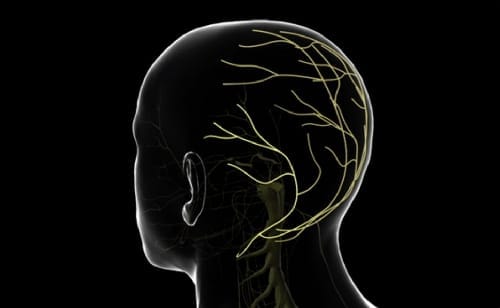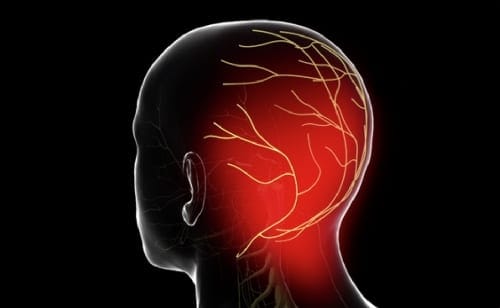Overview
Occipital neuralgia is a distinct type of headache with pain that starts in the upper neck or back of the head and may spread to the area behind the eyes and to the back, front and side of the head. The location of pain is related to the areas supplied by the greater and lesser occipital nerves, which run from the base of the skull through muscles at the back of the head and into the scalp. This condition is caused by irritation or injury of the greater and/or lesser occipital nerves.
Causes (Trauma)
Occipital neuralgia can be caused by direct trauma to the back of the head or neck. This could be anything from a fall to a car accident or even a sports injury. Injuries that inflame and pinch the greater and/or lesser occipital nerves may also cause pain and symptoms.
Causes (Tight Muscles – Stressed Nerves)
People who constantly sit with their head in forward and/or downward positions, such as those who do computer jobs, can end up with tight muscles at the back of the head, which can entrap the occipital nerves. Additionally, nerve compression may also affect people who do repetitive manual jobs.
Causes (Osteoarthritis of the Upper Cervical Spine)
Degenerative changes cause the cervical spine (the uppermost part of the spinal column) to break down and become stiff with time. This can eventually cause pressure and strain on the occipital nerves.
Causes (Diabetes)
Patients with diabetes have an increased risk to develop occipital neuralgia. This is because diabetes causes neuropathy or inflammation of the nerves themselves, including the occipital nerves.
Causes (Tumors and Infections)
Tumors and infections are rare causes of occipital neuralgia. A localized infection or tissue inflammation, or a tumor or lesion can lead to pressure or trauma of the occipital nerves.
Symptoms
Symptoms of occipital neuralgia include continuous aching, burning and throbbing pain or electric-shock like pain. This pain starts typically in the upper neck or back of the head and may spread to the area behind the eyes and to the back, front and side of the head. It usually affects only one side of the head, but it can be felt on both sides. In some patients, the scalp becomes extremely sensitive to even the lightest touch, making activities such as washing the hair or lying on a pillow very painful. The region where the occipital nerves enter the scalp may be extremely tender. The patient may experience muscle spasms in the neck with tightness and/or neck-stiffness. A light sensitivity, especially during a headache, may occur as well.
Treatment
Treatment for the occipital neuralgia is mainly conservative with rest, heat therapy, analgesic/ anti-inflammatory medications, muscle relaxants and physical therapy.
Moreover, percutaneous nerve blocks around the greater and lesser occipital nerves (occipital nerve blocks) may be administered not only to diagnose occipital neuralgia but also to achieve permanent reduction of pain.
In unusually chronic, severe and persistent occipital neuralgia, surgery may be performed to decompress the painful nerve. Another option is the implantation of an occipital nerve stimulator (pulsed radiofrequency procedure), a technique that stimulates the occipital nerves and prevents them from sending pain signals.
Reference
- Kraemer J., Hasenbring M., Kraemer R., Taub E., Theodoridis T., Wilke H.J.: Intervertebral Disc Diseases: Causes, Diagnosis, Treatment and Prophylaxis. Thieme 2009.


